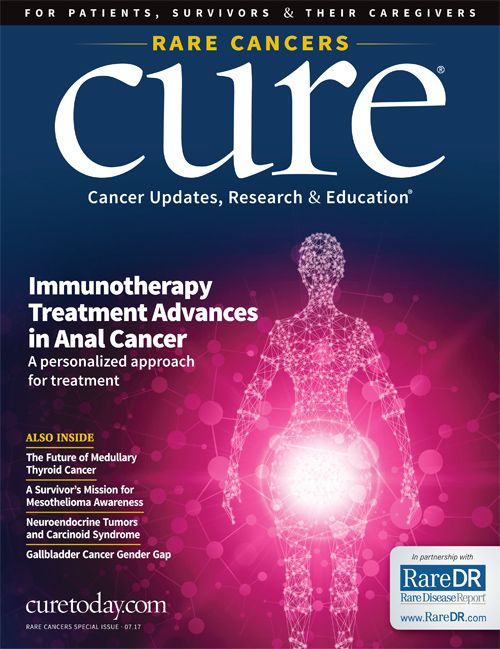Publication
Article
One Longtime NET Survivor's Quest to Educate Patients
Author(s):
Zuniga enjoys mentoring other patients as part of her volunteer work with the Arizona Carcinoid and Neuroendocrine Cancer Foundation. In February, she helped organize a panel discussion with physicians from Banner MD Anderson Cancer Center in Gilbert, Arizona, which was simulcast online so patients anywhere could learn about new treatment options and therapies that are in development.
JENNIFER ZUNIGA, a NET and carcinoid syndrome patient, works at the University of Arizona to help educate patients to be their own best advocate. - PHOTO BY MELISSA HOLLAND

JENNIFER ZUNIGA, a NET and carcinoid syndrome patient, works at the University of Arizona to help educate patients to be their own best advocate. - PHOTO BY MELISSA HOLLAND
JENNIFER ZUNIGA WAS STUNNED when she saw images of her neuroendocrine tumors (NETs) produced by a gallium 68 scan in 2015. She had been living with NETs since she was first diagnosed in 2001, but she hadn’t seen them so clearly until she was accepted into a clinical trial of gallium 68 CT/PET scans sponsored by the National Institutes of Health, during which she had three years’ worth of scans. “When you look at the gallium 68 scan it’s like high definition TV,” says Zuniga, who works as a health education administrator at the University of Arizona in Tucson. “It helps determine where the tumors are and informs your decisions of where you want to go with therapy.”
Zuniga, a board member for the Arizona Carcinoid and Neuroendocrine Cancer Foundation, recounts her experiences in that trial — and her many other treatments — when she talks to patients and others at events sponsored by the organization. Zuniga has undergone eight surgeries since her first NET was discovered in a lymph node under her right arm. NETs were later found in her gastrointestinal tract and ovaries.
During her 15 years as a patient with cancer, Zuniga has benefited from advancements in the diagnosis and treatment of NETs. She started taking somatostatin analogs soon after her diagnosis, and she underwent bowel surgery in 2002 — the combination of which, she says, “has been a lifesaver for me.”
More recently, Zuniga has benefitted from the FDA approval of Xermelo to treat diarrhea caused by NETs in February 2017. Zuniga started suffering from diarrhea long before her NETs were diagnosed and had adjusted her diet to help calm her intestinal system. The drug works so well now, she says, “I’ve branched out in what I eat in public.”
Zuniga enjoys mentoring other patients as part of her volunteer work with the Arizona Carcinoid and Neuroendocrine Cancer Foundation. In February, she helped organize a panel discussion with physicians from Banner MD Anderson Cancer Center in Gilbert, Arizona, which was simulcast online so patients anywhere could learn about new treatment options and therapies that are in development.
Zuniga is now helping plan a session for the summer aimed at educating all patients with rare tumors, as well as an event to commemorate Neuroendocrine Awareness Day in November. The goal of these and other events sponsored by the foundation is to provide advice to patients on how best to describe their symptoms to their physicians so they can ensure they’re being offered the best treatments for them. “People are sometimes afraid to offend their doctors,” Zuniga says. “We want to educate patients with rare cancers to be their own best advocate.”





